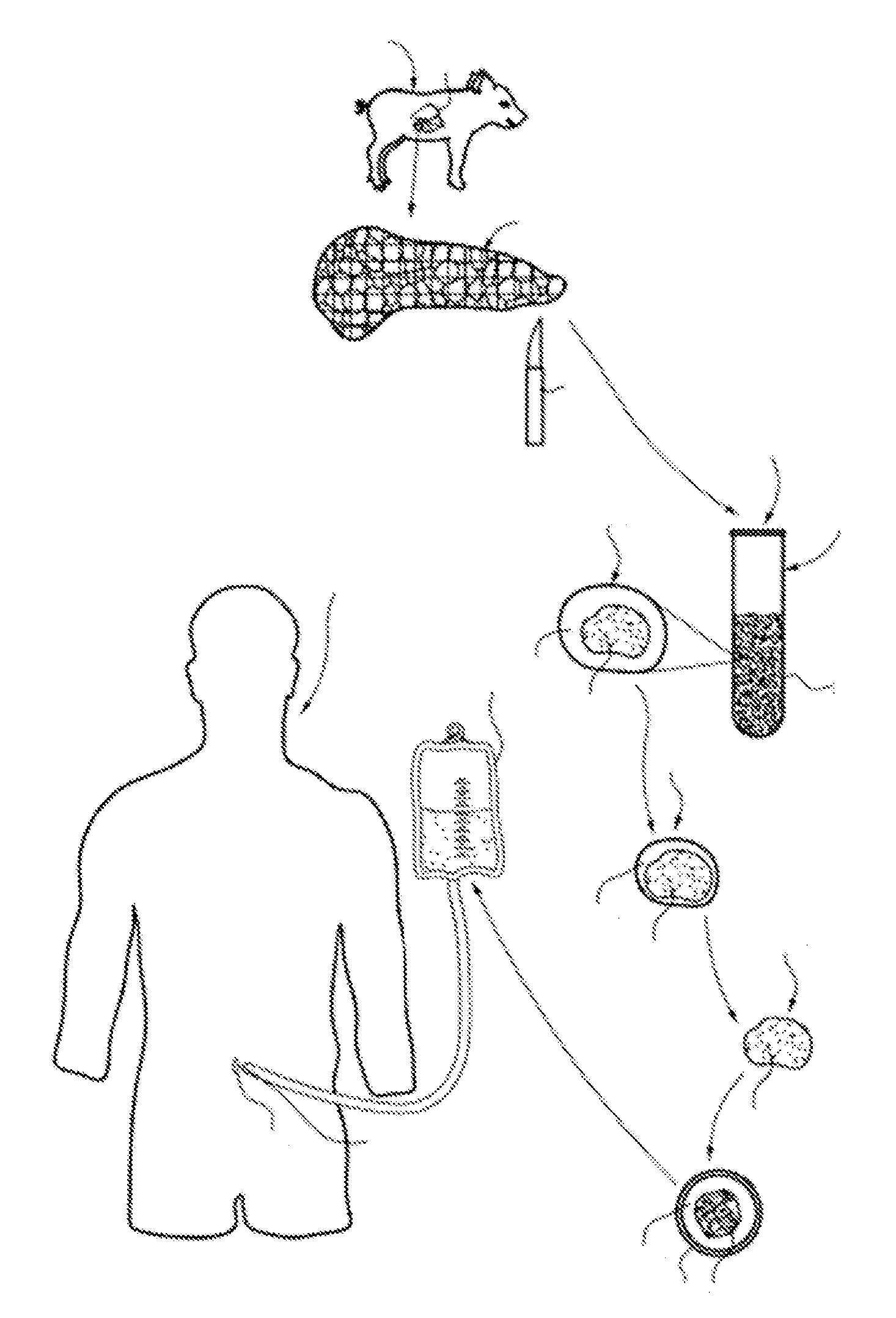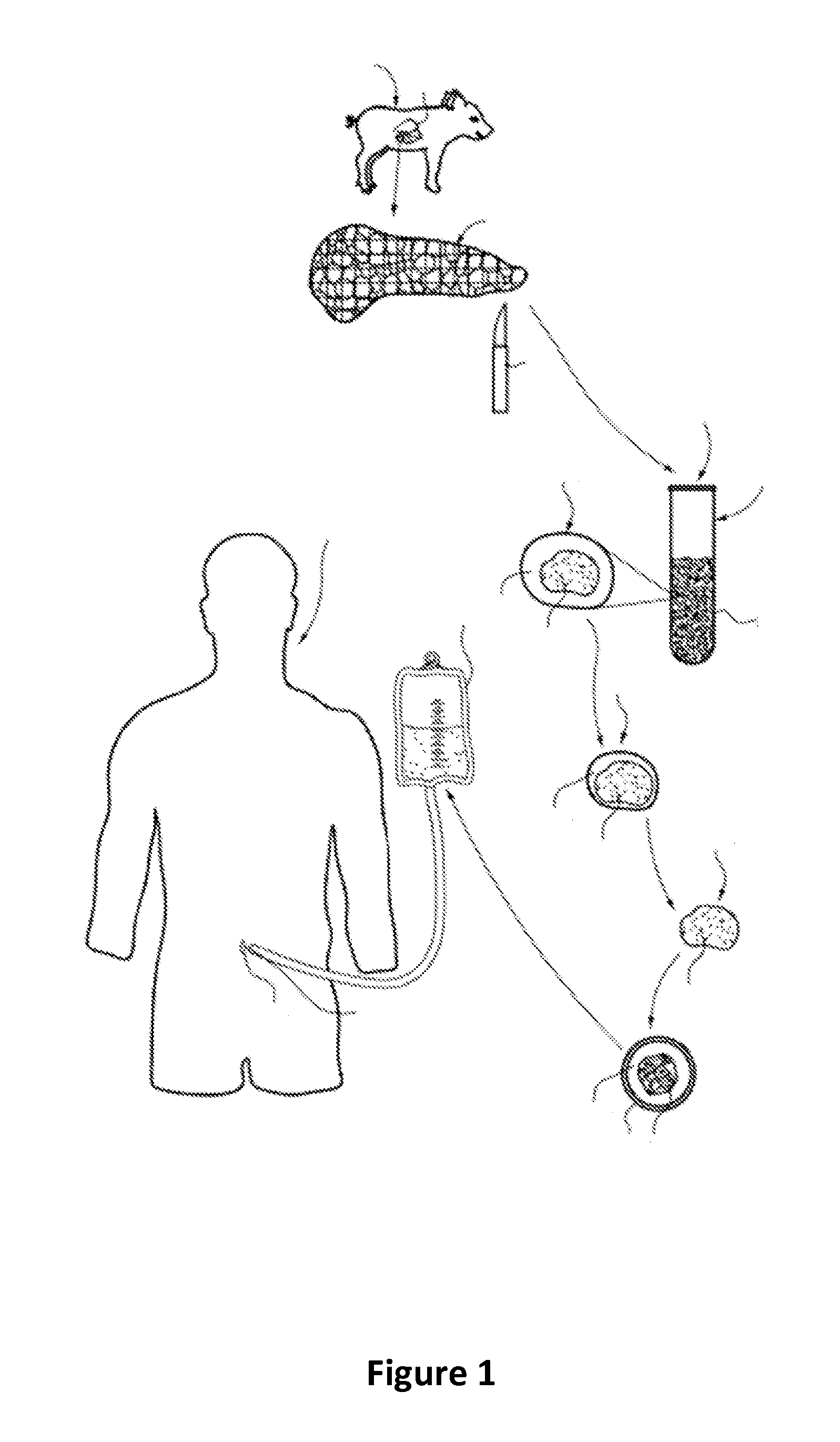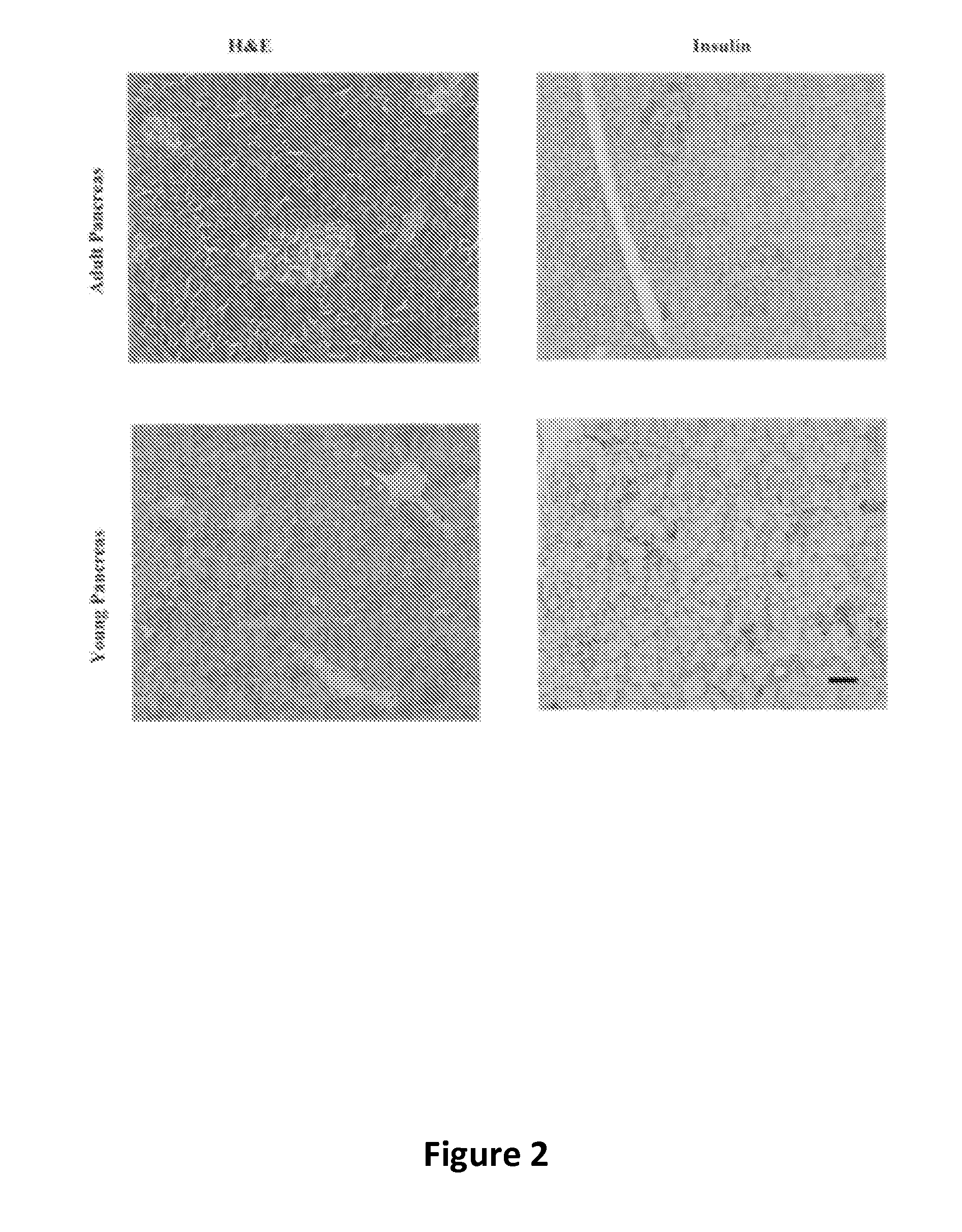Ex vivo maturation of islet cells
a technology of islet cells and cultured islets, which is applied in the field of ex vivo can solve the problems of limited therapeutic utilization, laborious islet isolation from young adult and market weight pigs, and large amount of equipment and supplies, so as to promote the maturation of islet cells, enhance glucose-dependent insulin secretion, and enhance the glucose responsiveness of cultured islets.
- Summary
- Abstract
- Description
- Claims
- Application Information
AI Technical Summary
Benefits of technology
Problems solved by technology
Method used
Image
Examples
example 1
Islet Removal and Isolation
[0043]Weanling piglets were used as the donor source of immature islets. A typical islet preparation procedure used ten 14 to 26 days old Yorkshire piglets. The pancreases were removed from the piglets by rapid surgical procurement, i.e., less than five minutes, and then placed in ice-cold Organ Preservation Solution (Corning Cellgro). The total cold ischemia time was limited to 20 minutes. The harvested pancreases were pooled and sectioned as follows. While chilled, pancreases were trimmed of surrounding adipose and lymphatic tissue, and then finely minced until the tissue sections were generally 0.5 mm to 1.0 mm in diameter. The sectioning process was performed using standard scissors and blender technology to mince the pancreatic tissue. The minced tissue was added to a low dose Clzyme collagenase MA / BP protease enzyme mixture (75-250 mg / pancreas, VitaCyte LLC, Indianapolis, Ind.) and allowed to digest at 37° C. and gentle rotary shaking (40-60 rmp) unt...
example 2
Recovery of Isolated Islets
[0044]For the first 48 hours post-isolation, islet clusters were cultured in a novel tissue culture medium that is termed recovery maturation medium. The first step in the preparation of recovery maturation medium involved obtaining a Ham's F-12 / Medium 199 basal medium (F-12 / 199 medium) in which the Ham's F-12 and Medium 199 components are present in a 1:1 ratio. In these studies, F-12 / 199 medium was prepared by adding Ham's F-12 and Medium 199 powders (both purchased from Cellgro, Inc.) in sterile water that met ISO 9001:2000 and cGMP guidelines (Thermo Scientific Inc., Waltham, Mass.) at weight / volume (w / v) concentrations of 0.815% each (i.e., 8.15 g in 1 L water). The F-12 / 199 medium was then supplemented with: 5.5% (w / v) porcine serum (Lampire Biological Laboratories, Inc., Pipersville, Pa.); 2.5×10−3% (w / v) gentamycin sulfate (Fisher Bioreagents, Thermo Fisher Scientific, Inc., Waltham, Mass.); 0.062% (w / v) glutathione tripeptide (Acros Organics, Ther...
example 3
Maturation of Excised Islets
[0045]After 48 hours of being cultured in recovery maturation medium, the islets were removed from the recovery maturation medium, centrifuged for two minutes at 200×g, and re-suspended in a modified version of the recovery maturation medium that is referred to herein simply as “maturation medium.” Specifically, the difference between recovery maturation medium and maturation medium is that maturation medium has one-half the amounts of Pefabloc™ and DNase Alfa. The islets were cultured in maturation medium until the islets matured fully, a period of time of about eight to nine days, during which 50% medium replacements were made every 48 hours. Full maturation of islets was defined in accordance with the histochemical and functional analyses described in the following examples. When the islets reached full maturation, they could be cultured long-term in a “supplemented maturation medium,” which was maturation medium that contained an additional 5 mM conce...
PUM
 Login to View More
Login to View More Abstract
Description
Claims
Application Information
 Login to View More
Login to View More - R&D
- Intellectual Property
- Life Sciences
- Materials
- Tech Scout
- Unparalleled Data Quality
- Higher Quality Content
- 60% Fewer Hallucinations
Browse by: Latest US Patents, China's latest patents, Technical Efficacy Thesaurus, Application Domain, Technology Topic, Popular Technical Reports.
© 2025 PatSnap. All rights reserved.Legal|Privacy policy|Modern Slavery Act Transparency Statement|Sitemap|About US| Contact US: help@patsnap.com



